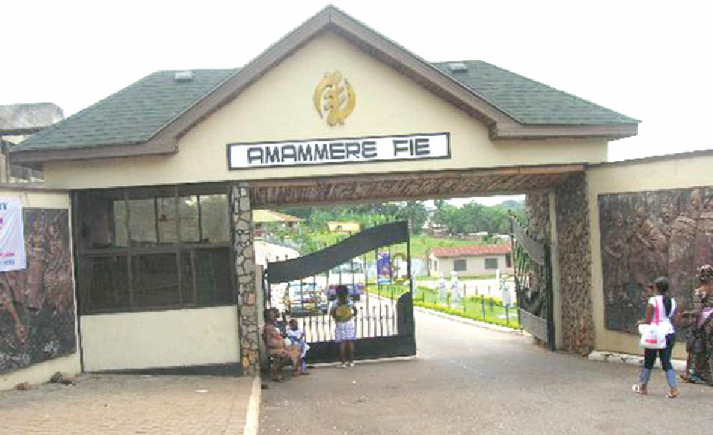
Oseikrom culture hub
We know it would come to this. While, a while ago, we were showcasing the culture-rich centres in Accra, others elsewhere were just counting on their turn.
When it seemed as if we were done and we were not reaching out beyond the capital, the complaints started coming in from across the regions. Won’t we show the world what they’ve also got? Is Ghana just about Accra?
So here we are; going around Ghana to feature the spaces which are showing the richness of our culture. And we start with the heartlands of Ashanti. But before I even talk about what obtains here, let me talk about one personality who was instrumental in establishing this pioneer Culture Centre.
The name is Dr Kyerematen. Shortly after our independence, this man realised that Ghana's rich Cultural Heritage was painfully being eroded by other influences particularly, by Western Culture and there was the urgent need to preserve the Ghanaian Culture in a more concrete way.
He proposed the creation of monumental forms such as Museums, Craft Villages, and Cultural Centres for posterity. Prempeh II and the Asanteman Council supported Dr. Kyerematen to give birth to the ‘Cultural Centre’ which was then christened the “Ashanti Cultural Centre”.
The name Ashanti Cultural Centre remained so until 1963, when Dr. Kwame Nkrumah who was then brimming with the spirit of Nationalism and also seeing the potential value of the Centre with the full support of the stakeholders nationalised the Centre and renamed it "Ghana National Cultural Centre".
The Kumasi Centre is now called the Centre for National Culture, as indeed are the other Cultural Centres in other Regions of Ghana. It is nonetheless considered as the show piece and model for the other centres. This is due to its vastness coupled with the aesthetic and scenic beauty and the numerous facilities and structures.
Currently, the centre is being manned by highly-trained and skilled professionals. This award winning and well maintained Centre for National Culture in Kumasi is a must see by every visitor to Ghana.
The rich cultural heritage of Ghana stands out as the envy of most countries. Visitors to the country are first struck by its valuable artistic features. This has made some foreigners refer to Ghana as the 'Centre of Africa' and the city and people that are widely recognised as the centre and seat of the nation’s cultural heritage are Ashantis and Kumasi.
This cultural institution has the aim of preserving, protecting, promoting and projecting our rich cultural values and heritage. It was modelled to portray the three distinctive features of history, Folklore music/dance/drama and Arts & Craft.
Within the centre are specific features as follows:
The Prempeh II Jubilee Museum
The architectural design in this Museum is fashioned as a replica/prototype Ashanti tradition palace consisting of four chambers of buildings arranged in an enclosed rectangular courtyard.
The Museum built in 1956 has the basic aim to collect, preserve and restore artifacts of historical and ethnographic importance. It therefore, provides insight and gives continued documentation of different periods of Ashanti history.
The Museum has the basic aim to collect, preserve and restore artifacts of historical and ethnographic importance.
A photocopy of the Golden Stool
This stool was made of brass and nicely coated with gold and given to the British. Since the British themselves had never seen the Golden Stool they accepted it for real. They only realised it was a fake when they melted off the gold on the Stool.
This therefore gives credence to the claim by Ashanti that they did not lose the war fought with the British since they still have the original Golden Stool safely in their custody.
Among the rare artefacts of the Museum are; the Ashanti war drum known as (ETWIE) in Twi.
This fascinating war drum draped in leopard skin was used as a secret weapon of Ashanti warriors.
Whenever they went to war they took the drum to the battle field in the jungle. In the course of the battle those with the ear drums with a cuddle will scratch the surface of the drum with the cuddles.
A deafening roaring sound of lions/leopards emanated from the jungle. The sound would frighten the enemies to think that wild cats were coming after them.
The Independence Brass Pan of Ashanti
History tells us that before Ashanti became an empire or a Kingdom, they were subjects to an ethnic group in Ghana today called Denkyira.
The Culture Centre here is also the venue for many social events in addition to theatre performances. There is a craft shop, drinking bar and bookshop which are income generating areas for the Centre.
kofiakpabli@yahoo.com
The writer is a Communication and Tourism Specialist. Books he has authored include ‘Romancing Ghanaland- the Beauty of Ten Regions’, Tickling the Ghanaian-Encounters with Contemporary Culture & ‘Harmattan- a Cultural Profile of Northern Ghana.’
